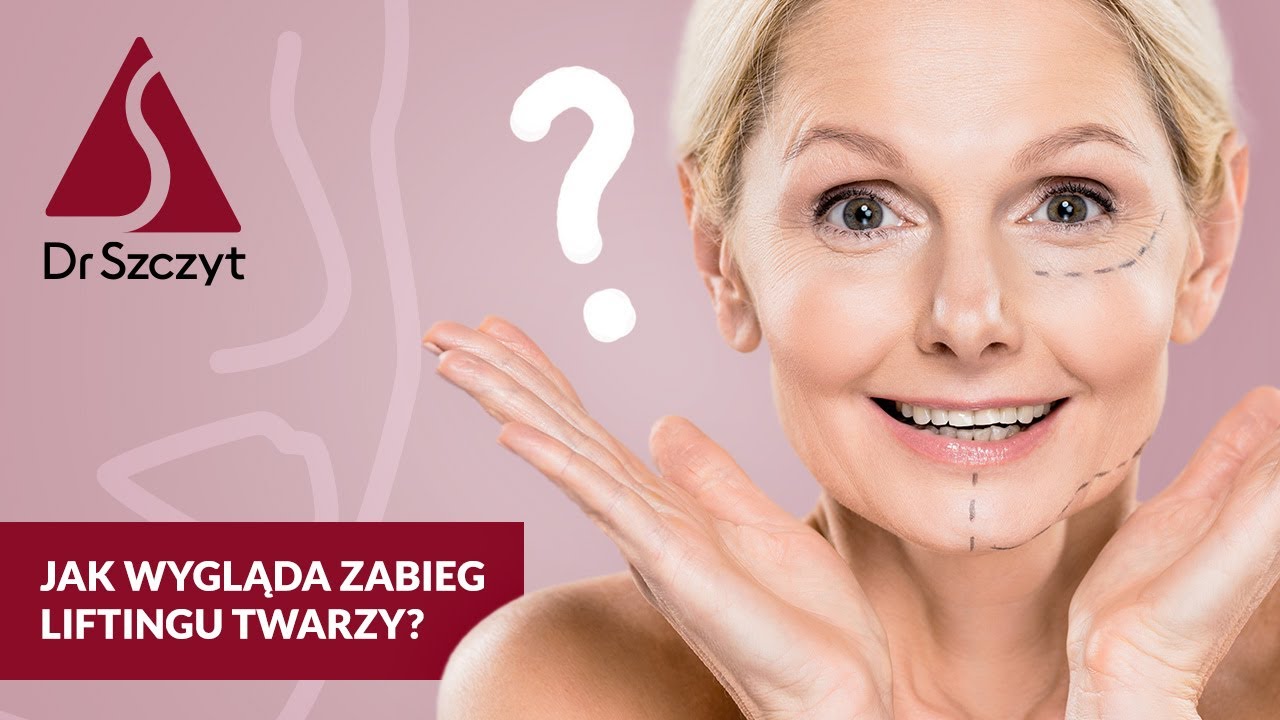Facial asymmetry - when does it become a problem and how can it be corrected?

A perfectly symmetrical face is a rarity - in fact, everyone will notice some differences between the right and left sides of the face due to natural anatomical structure. They are usually subtle, but in some cases, when pronounced, they affect self-esteem and psychological comfort. In a world of social media and retouched photos, many people begin to see asymmetry as a problem, although in most cases it does not require correction. However, when facial inequalities are pronounced enough to affect facial expressions, muscle function or the proportions of features, it is worth looking into their causes and methods of correction.
Facial asymmetry - is it normal?
The face, like the rest of the body, is never perfectly symmetrical. Differences between the two sides are natural and occur in every person - it could be a slightly higher raised eyebrow, one eye larger than the other, or a slight difference in the contour of the mouth. Most of the time we don't pay attention to them because they are subtle and don't affect the appearance in a way that would be immediately noticeable.
The problem arises when the asymmetry is pronounced and affects facial proportions or functionality, such as by:
- Facial expression disorders - limited mobility of one side of the face,
- disproportions in the shape of the facial bones, which can result from congenital defects or trauma,
- occlusal problems and mandibular asymmetry that affect the layout of the entire lower face,
- changes in asymmetry with age, when, for example, the drooping of one side of the face becomes more prominent.
In most cases, facial asymmetry is a natural part of one's appearance and is not a cause for concern. However, in situations where it is pronounced, causes complexes or affects the functionality of muscles and facial expressions, it is worthwhile to consult a specialist who will help select appropriate methods to improve facial proportions - from exercises to strengthen facial muscles to modern aesthetic treatments.
What are the causes of facial asymmetry?
Genetic factors - the face is shaped by inherited traits. Genes determine bone structure, muscle distribution, skin elasticity and even facial expressions. If facial asymmetries have run in the family, there is a greater chance that they will also be seen in subsequent generations.
Emergency conditions and trauma - fractures of the facial bones, facial nerve damage or stroke can lead to marked changes in facial symmetry. Muscle paresis, scarring or changes in bone structure make one side of the face less mobile or change its proportions.
Sun damage - prolonged and uneven sun exposure accelerates skin aging, causing sagging and wrinkles. If one side of the face is exposed to UV rays more often (e.g., while driving a car), the skin on that side may lose firmness faster, exacerbating asymmetry.
Aging - the aging process does not occur evenly on both sides of the face. Over time, the amount of collagen and elastin decreases, causing the skin to droop, and changes in the structure of fatty tissue can make one side of the face look different from the other. Some facial muscles also weaken more quickly, which also affects differences in facial expressions and facial contours.
Cigarette smoking - cigarette smoke accelerates skin aging, causing the perpetuation of wrinkles, reduced elasticity and uneven sagging of the skin. If the smoking habit is associated with frequent positioning of the lips in a certain way, such as when inhaling a smoke, it can lead to increased asymmetry in the mouth and cheek area.
Tooth loss and bite problems - an abnormal bite, missing teeth or asymmetrical work of the jaw muscles lead to a change in the alignment of the facial bones. If one side of the jaw works more intensively (for example, when chewing food), the muscles of that side will be more developed, which over time can cause a visible disproportion in the shape of the lower face.
Lifestyle and habits - daily habits can gradually affect the appearance of the face. Frequent sleeping on one side, supporting the face with the hand, uneven posture or even facial expressions related to emotions can lead to one side of the face looking different from the other.
Methods of correcting facial asymmetry - how to restore harmony of features?
Facial asymmetry can affect various areas, including the eyebrows, eyelids, cheeks, lips, nose or jaw. The choice of correction method depends on the cause of the unevenness - if the asymmetry is due to different muscle activity, Botox injections can be an effective solution, while in the case of tissue loss, the volume can be equalized using hyaluronic acid. In situations where the differences are pronounced, lifting threads or surgical intervention may be necessary.
Botulinum toxin - precise correction of small bumps
Botulinum toxin (Botox) relaxes the muscles, which allows to compensate for differences in tension on both sides of the face. As a result, asymmetry resulting from excessive work of one muscle group can be corrected, for example:
- Eyebrow asymmetry - raising one eyebrow can make the face look more proportional,
- Drooping corner of the mouth - balancing facial muscle tension,
- Masseter muscle differences - helpful for asymmetrical lower face tension.
The first results of Botox are visible after 5-7 days and last for about 3-6 months, after which the procedure can be repeated. The procedure is quick and minimally invasive, with no need for convalescence.
Volumetrics - hyaluronic acid in facial contouring
Hyaluronic acid is an excellent filler that restores lost volume, evens out contours and harmonizes facial features. It is used to correct asymmetry resulting from:
- Disproportionate cheeks - adding volume on one side of the face,
- Asymmetrical jawline - highlighting the contours,
- visible differences in the volume of one side of the face - caused, for example, by aging or fat loss.
The effects are visible immediately after the procedure and last from 9 to 18 months. The advantage is that the face can be gradually reshaped during subsequent visits.
Lifting threads - improving facial oval and proportions
Treatment with PDO threads involves inserting special fibers under the skin:
- It lifts sagging tissues, improving facial symmetry,
- They stimulate collagen production, making the skin tighter and firmer.
This method is particularly effective for asymmetry caused by a drooping eyelid or eyebrow, drooping cheeks (the "hamster" effect), or visible asymmetry of the lower face, such as a difference in jaw tension.
The improvement in facial contours is even immediate, but you have to wait 3-4 weeks for the full effect. The results last from 12 to 24 months.
Surgical procedures - permanent correction of asymmetry
In the case of marked asymmetry, which is due to anatomical structure, surgical intervention is the only effective solution. The most common procedures include:
- Eyelid plasty (blepharoplasty) - used for differential drooping of the eyelids,
- Facelift - effective for asymmetry associated with loss of skin firmness,
- Correction of the nose (rhinoplasty) - for asymmetry caused by curvature of the septum or uneven shape of the nose,
- Operative correction of the mandible - if the asymmetry is due to a malocclusion or unevenly developed mandibular bone.
The effects in most procedures are permanent, so there is no need for repeat surgery. Full recovery, however, takes from a few weeks to a few months, but done well, it allows for a spectacular improvement in the symmetry of facial features.
How to choose the right method of asymmetry correction?
The choice of the method of asymmetry correction should be based on an analysis of the degree of inequality, its causes and the patient's expectations. It is worth remembering that the goal is not to achieve perfect symmetry, but to restore the harmony of facial features and improve the quality of life.
- If the asymmetry is subtle and due to muscle tension, Botox will work.
- If uneven facial volume is an issue, consider hyaluronic acid.
- If the asymmetry is due to tissue sagging, lifting threads will help.
- If the problem involves the facial bone structure, plastic surgery may be necessary.
The most important thing in choosing a method is consultation with an experienced specialist. It is worth remembering that any intervention should be well thought out, and its purpose is not only to improve appearance, but also mental comfort and acceptance of one's own image.
FAQ
Is facial asymmetry normal?
Yes, slight facial asymmetry is completely natural and occurs in every person. Differences in the height of the eyebrows, the shape of the mouth or the size of the eyes are part of individual facial anatomy. However, when asymmetry is pronounced or intensifies with age, it can be the result of health factors, such as bite problems, trauma or facial muscle weakness.
Can facial asymmetry worsen with age?
Yes, the aging process can increase asymmetry, as skin loses elasticity over time, fatty tissues shift, and muscles can weaken unevenly. This can lead to drooping of one side of the face, a change in the oval, and more visible differences in facial expressions.
Can facial asymmetry be the result of bite problems?
Yes, misalignment of the jaw, malocclusion or missing teeth leads to asymmetrical muscle tone, which over time changes the appearance of the jaw and cheeks. In such cases, orthodontic correction, prosthetic treatment or surgical reconstruction of the mandible can help.
How can botulinum toxin help correct facial asymmetry?
Botox works by weakening overly tense muscles to compensate for differences in eyebrow elevation, positioning of the corners of the mouth, and jaw muscle tension (for asymmetrical bruxism). The effects last 3-6 months, after which the treatment can be repeated.
How does hyaluronic acid affect facial asymmetry?
Hyaluronic acid is a filler that can restore missing volume on one side of the face, even out the contours of the cheeks, chin and jaw, and gently lift asymmetrical parts of the face. The procedure does not require convalescence, and the effects last from 9 to 18 months.
Can facial muscle exercises help compensate for asymmetry?
In some cases, regular facial exercises will help, especially when the asymmetry is due to uneven muscle activity. Exercises can strengthen the weaker side of the face and improve its tension. However, in the case of structural (bone) asymmetry, they will not have significant effects.
Is correction of facial asymmetry painful?
Most aesthetic procedures, including Botox, hyaluronic acid or lifting threads, are minimally invasive and almost painless - local anesthesia is used. In the case of surgical methods (e.g., facelift, eyelid plasty), pain may occur in the first few days after the procedure, but is controlled with pain medications.
How to choose the right method to correct facial asymmetry?
The best solution is to consult a specialist, who will assess the degree of asymmetry, its cause and propose a customized method of correction - from non-invasive procedures to plastic surgery.
Worth watching

















